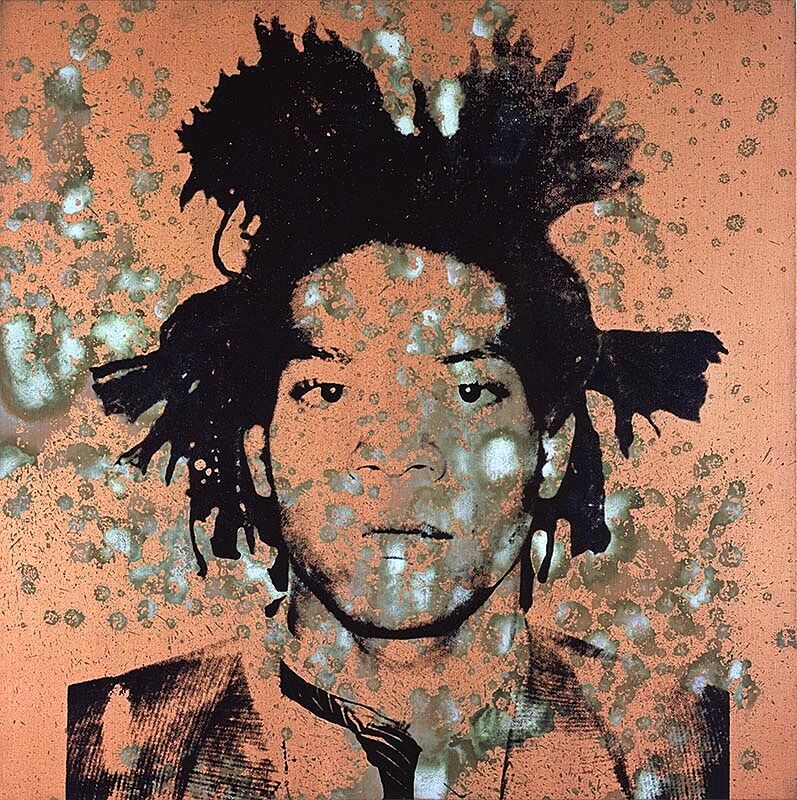Andy Warhol— From A to B and Back Again | Art & Artists
Nov 12, 2018–Mar 31, 2019
Andy Warhol— From A to B and Back Again | Art & Artists
Collaborations
18
Warhol was also conscious of a younger generation whose re-engagement with popular culture, riffs on graffiti, and New York East Village locus intrigued him. In 1981 Warhol met Jean-Michel Basquiat, Francesco Clemente, and Keith Haring, who would all collaborate with Warhol on paintings. He was attracted to and energized by the expressive immediacy of their artistic approach, which in part triggered his return to making new work with the hand-painted technique he had used pre-silkscreen. In diary entries from the early 1980s, he mentioned Basquiat, Haring, Jenny Holzer, Barbara Kruger, David Salle, Julian Schnabel, Cindy Sherman, and other young artists.
“THE 1980S ARE SO MUCH LIKE THE SIXTIES.”
As with his work of the 1960s, many of the subjects Warhol chose to incorporate into his work reflected political, economic, and social preoccupations of the period: Cold War military excursions, missile silos, Reagan-era economic reforms, the death of graffiti artist Michael Stewart at the hands of New York City police officers, and gentrification. Many of these works also held more personal significance, such as references to the burgeoning AIDS crisis, religious tracts, and physiological diagrams.
Jean-Michel Basquiat and Andy Warhol, Paramount, 1984–85
Paramount is among the hundreds of collaborative works Warhol made with Jean-Michel Basquiat. According to Basquiat, Warhol would begin the paintings with “something very concrete, like a newspaper headline or product logo, and then I would sort of deface it.” Depending on the work, this process could continue for two or three rounds, until a balance was reached between Warhol’s hand-painted images and Basquiat’s abstract gestures, text, numbers, and pictographs. The imagery in Paramount reflects each artist’s ongoing preoccupations with capitalism, politics, and celebrity, but also alludes to Warhol’s own life: the logo may refer to his partner at the time, Jon Gould, a vice president at the film company.
-
-
-
-
Hear from artist T. J. Wilcox about the collaboration—and competition
0:00
Hear from artist T. J. Wilcox about the collaboration—and competition
0:00
-
Related works 18
Related artworks
From the Collection




